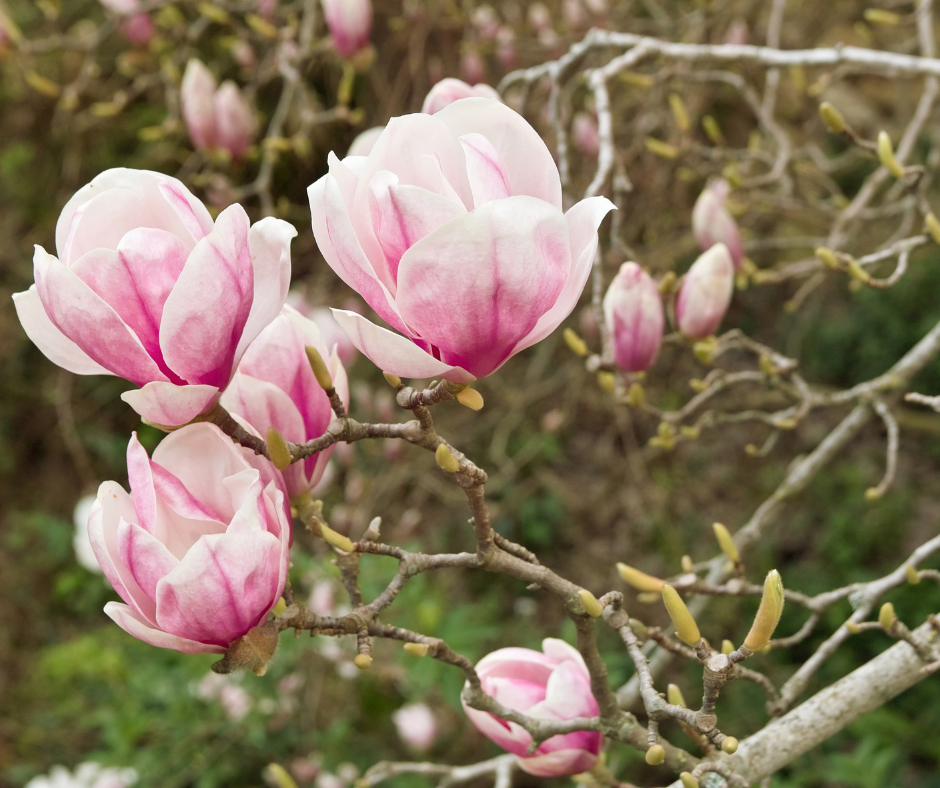What Are Deciduous Magnolias?
go.ncsu.edu/readext?847428
en Español / em Português
El inglés es el idioma de control de esta página. En la medida en que haya algún conflicto entre la traducción al inglés y la traducción, el inglés prevalece.
Al hacer clic en el enlace de traducción se activa un servicio de traducción gratuito para convertir la página al español. Al igual que con cualquier traducción por Internet, la conversión no es sensible al contexto y puede que no traduzca el texto en su significado original. NC State Extension no garantiza la exactitud del texto traducido. Por favor, tenga en cuenta que algunas aplicaciones y/o servicios pueden no funcionar como se espera cuando se traducen.
Português
Inglês é o idioma de controle desta página. Na medida que haja algum conflito entre o texto original em Inglês e a tradução, o Inglês prevalece.
Ao clicar no link de tradução, um serviço gratuito de tradução será ativado para converter a página para o Português. Como em qualquer tradução pela internet, a conversão não é sensivel ao contexto e pode não ocorrer a tradução para o significado orginal. O serviço de Extensão da Carolina do Norte (NC State Extension) não garante a exatidão do texto traduzido. Por favor, observe que algumas funções ou serviços podem não funcionar como esperado após a tradução.
English
English is the controlling language of this page. To the extent there is any conflict between the English text and the translation, English controls.
Clicking on the translation link activates a free translation service to convert the page to Spanish. As with any Internet translation, the conversion is not context-sensitive and may not translate the text to its original meaning. NC State Extension does not guarantee the accuracy of the translated text. Please note that some applications and/or services may not function as expected when translated.
Collapse ▲ When most people think of magnolias, the common evergreen, Southern Magnolia comes to mind. But there are several deciduous magnolias that are smaller and more versatile in the landscape, and they should be used more often. There is a deciduous magnolia for almost any site or need.
When most people think of magnolias, the common evergreen, Southern Magnolia comes to mind. But there are several deciduous magnolias that are smaller and more versatile in the landscape, and they should be used more often. There is a deciduous magnolia for almost any site or need.
The Saucer Magnolia is the most familiar deciduous magnolia. The large pink to lavender buds open to show white throats and can reach up to 8 inches across. The flowers, which prompt many to call the Saucer Magnolia a tulip tree, come before the leaves and are a striking contrast against the smooth, graceful, gray trunks. The Saucer Magnolia is a small, low-branching tree, growing to 30 feet.
If you need an even smaller tree or a large shrub, the Star Magnolia is one of my favorites. The white, star-like flowers are smaller, but numerous and very fragrant. The Star Magnolia grows to a height and spread of 15 to 20 feet and is attractive as a specimen or in a shrub border. Grown most often as a multi-stem shrub, these can be grown as single stem specimens with a little effort.
For a damp or shady spot, the Sweet Bay magnolia is a good selection. Native throughout the East coast, it ranges from a small deciduous tree in its northern limits to a large evergreen tree in the deep South. The creamy flowers have the typical citrusy magnolia scent and will provide blooms in the shade where many plants do not.
With the exception of the Sweet Bay, magnolias require rich, moist, but well-drained soil, and do best in full sun. Spring is the best time for planting. Water deeply, and mulch well at planting. As with any large shrub or tree, the plant will need to have supplemental irrigation during the first 2-3 years or so when rainfall is insufficient. Once the plant is established, avoid disturbing the roots and pruning is usually only needed to remove dead, damaged, or diseased wood.




